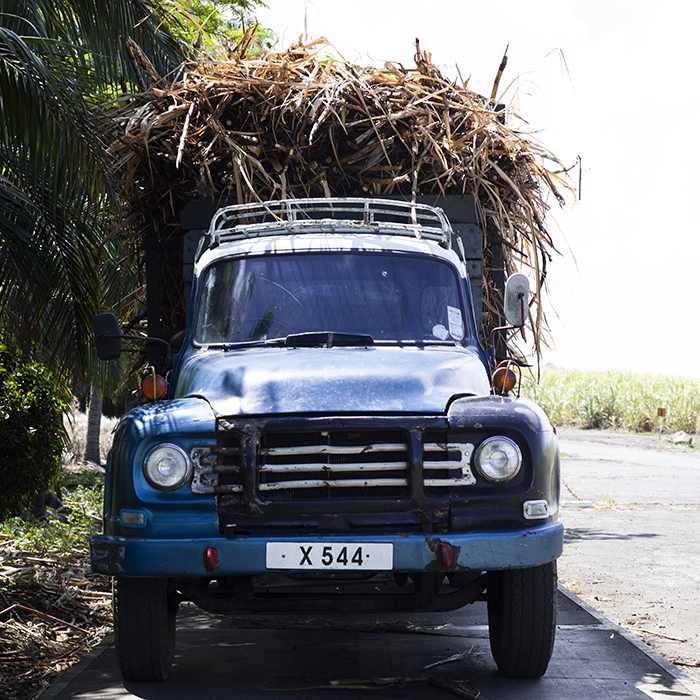Rum: everything you need to know
Author: Berry Bros. & Rudd

Rum is at long last on the rise, but – to the uninitiated – the world of rum can be as confusing as, well, single malt whiskies. It is, of course, equally rewarding. It also has the distinction of being the most sought-after base spirit for thousands of cocktails, as well as a popular pre or post dinner dram.
The world of rum is remarkably varied. This exotic spirit’s raw ingredient is sugar cane or molasses – rather than grain (as for whisky) or grapes (as for Cognac and Armagnac). Produced in the tropics, in the heat of the Caribbean, Central and South America, these culturally diverse regions create similarly wide-ranging styles of rum. You may also see rums labelled as rhum (French) or ron (Spanish).
How is rum made?
Much like grapes, sugar cane is normally harvested only once a year, although in subtropical climates – again, like grapes – it can crop twice a year.
Once the sugar cane is harvested (by hand or machine), it is stripped of its leaves, then washed, chopped and pressed to extract its juice. You can make rum from this liquid, a style called rhum agricole, and native to the French West Indies. To turn this juice into molasses (so for any style other than rhum agricole), this juice is then boiled (as many as three times), to concentrate and crystallize the sugar. Today, most producers will buy molasses rather than make it themselves.
Yeast and water are added to the molasses and the mixture is fermented, producing a “wash”. The wash is then distilled. If it is a golden or dark rum, the spirit will then be matured in barrel before being bottled and sold. The type of yeast, the length of fermentation, the type of still used – pot or column, and how or if it is aged will all impact the style of rum made.

The three styles of rum: Spanish, French and British
Much like the world of whisky, almost every style is made everywhere when it comes to rum. Broadly speaking, though, there are three main regions – or styles – of rum. Each region has its own different traditions, climate, and style of ageing – essentially terroir, all of which impact the style of rum made.
Former Spanish American colonies (Cuba, Panama, Venezuela, Guatemala, Nicaragua, Puerto Rico, Columbia and the Dominican Republic): Rums from these regions tend to be made in the Spanish style, produced with molasses and column-distilled, resulting in a light, crisp, clean taste. You’ll often seen terms on the labels that are used for Sherry or indeed Tequila – such as añejo or solera. Nicaragua produces approachable styles that mature slowly, thanks to the country’s cooler climate. Guatemala, meanwhile, has a long history of exporting sugar cane and produces some of the world’s most celebrated rums.
Former French colonies (including Haiti, Guadeloupe, Martinique): These are distinguished by their double-distilled, oak-aged (for three or more years) rums from fresh sugar cane juice, rather than molasses – rhum agricole. The resulting flavours are sweeter, lusher and the spirit character softer and more rounded. These rums may undergo maturation in ex-Cognac barrels – and the so-termed rhum vieux (aged rum) is frequently compared to French brandies.
Former British colonies (including Barbados, Bermuda, Belize, Guyana, Mauritius, Trinidad and Jamaica): Here there is a tradition for darker, sweeter, richer rums, typically produced with molasses and copper-pot-distilled. Barbados is thought to be rum’s birthplace, while the Demerara region of Guyana yields particularly age-worthy rums. Trinidad and Jamaica are home to the most aromatic, fruity styles, which are used extensively for blending.
Four to try: our Classic rums
Barbados: Often claimed to be the birthplace of rum, Barbados has over 350 years’ experience growing sugar cane. This example is softly brooding on the nose, with sugared almonds providing levity, especially allied to a palate offering notes of dense wood and molasses. This is a delightfully old-fashioned rum of a type that has been popular on these islands for generations.
Nicaragua: Nicaragua rum is known for its approachable style and slow maturation, due to its cooler climate. Aromas of cocoa nibs, maple syrup and tobacco lead us into the undergrowth of the Nicaraguan rainforest. Touches of moss, overripe lime and camphor appear on the palate, while the finish persists with caramelised sugar and sweet wood. Truly, an enervating specimen.
Jamaica: With a history steeped in rum production, Jamaica produces unique, distinctive and full-flavoured spirits. The quintessential characteristics of Jamaican rum shine through here, with ebullient notes of fruit, spice and dunder. Burning rosehips, thriving beehives and a boozy evening in an artist’s studio are all conjured by the imagination of this particular taster. Not everyone will like this remarkable rum, but those who do will find immense nourishment.
Guatemala: With a long history of exporting sugar cane, Guatemala is renowned for producing some of the world’s most celebrated rums. This spirit offers an intriguingly restrained nose, with notes of baklava, crepe bandage and marginally undercooked arrowroot biscuits, with maybe a hint of curry leaf. The palate is dominated by sugar cane, although pleasingly dry on a finish where any wood is beautifully smothered in cane honey. Mojitos all round, please.
Find out more about our new Classic rums, or explore our full range of rum.


